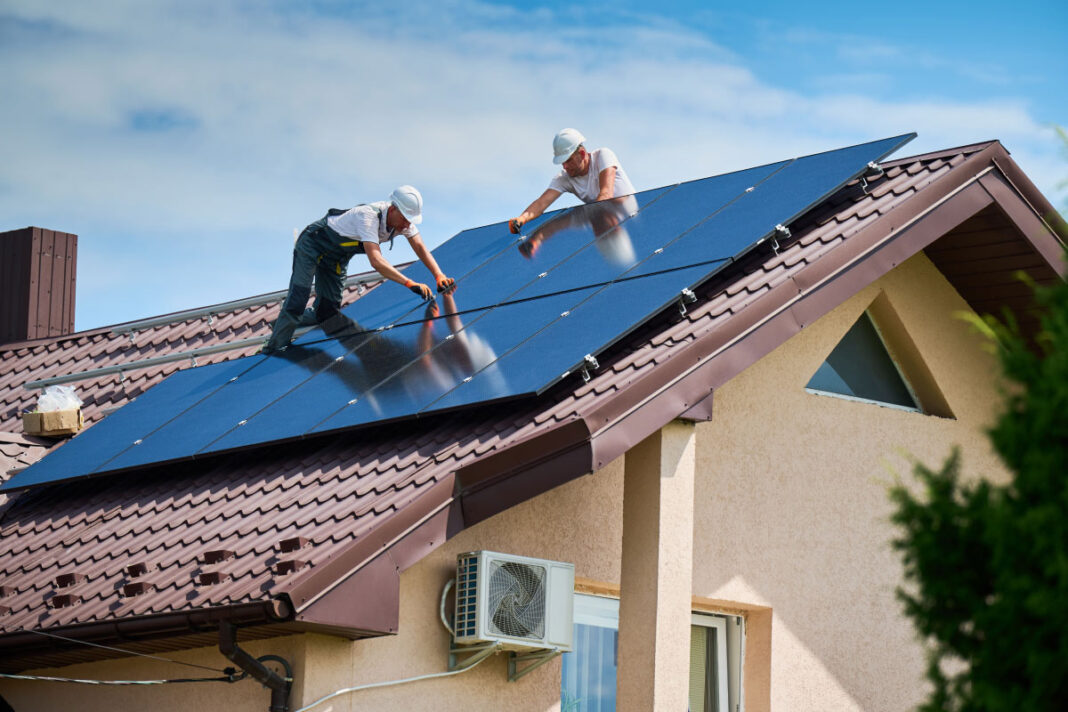It’s important to upgrade the home every few years to improve livability and meet the family’s changing needs. But when doing so, one must focus on energy efficiency. Using poor insulation and investing in low-quality appliances can increase power consumption and raise monthly energy bills. On the other hand, energy-efficient home upgrades can help save money over time and even improve the home’s value, should one want to sell it.
Focus on Home Insulation
Sealing the home with proper insulation is among the common steps for energy-efficient home improvements. While insulation does not change the home’s appearance, it enhances comfort indoors. When done correctly, it keeps the warm or cool air from escaping while preventing the outside air from getting in. As a result, the power used to cool and heat the home is reduced, in some cases, by up to 10% or more. Energy-saving is one of the key benefits of home sealing and insulation.
Upgrade the Doors
Gaps in doors are another common cause of higher energy bills, as they allow cooled or heated air to escape. To save energy at home, one can upgrade the door. When doing so, it’s important to choose the right materials. A single-pane glass door, for instance, will lose more heat than a pane made of insulated wood, fiberglass, or composite materials. Doors with new weatherstripping or energy-efficient features like adjustable thresholds or sealing systems can minimize air leakage. If replacing a door is expensive, or if the existing door is still in good condition, one can add a storm door to improve overall efficiency.
Get the Right Windows
The windows also affect energy efficiency. When upgrading the home, one should pick windows with two or more glass panes, as these offer superior insulation, reducing home energy costs. One can also apply low-emissivity coatings on windows as they can reduce energy loss by 30% to 50%. Caulking, window films, and storm windows are other ways to enhance insulation and reduce overall energy costs.
Install a Skylight
Instead of using too many lights at home, one can add a skylight to illuminate certain areas during the day. These installations help reduce power consumption and save money. Positioning a skylight on a south-facing slope can even help heat a room during winter while steering clear of direct sunlight in summer. Blinds or shades can be added to the skylight to block excess solar heat on warmer days.
Use Solar Panels
Installing solar panels is another way to make a home energy-efficient. Depending on the home’s design and available space, one can consider getting rooftop solar panels, ground-mounted systems, or both. Some States offer incentives and financing for solar panel home upgrades, which make them an attractive investment. A solar home is also eligible for IRA tax credits of up to 30% of the project cost. Solar panels are now easier to find as many cars, heat pumps, and other all-electric equipment also use them as a power source.
Make Kitchen Upgrades
Installing energy-efficient appliances in the kitchen is among the most beneficial eco-friendly home upgrades. Switching from a regular gas stove to an induction stove or cooktop, for instance, can lower energy consumption by heating the cookware itself rather than the stove surface. This means faster cooking times and less energy used. Induction also offers better heat distribution and accurate temperatures, meaning the meal can be cooked just right.
Upgrade the Heating System
Traditional water heaters that use natural gas, propane, or other fuels can be replaced with heat pump water heaters. These are hybrid machines that comprise a water tank with both a heat pump and electric-resistance components. The heat pump transfers energy from the surrounding atmosphere rather than creating it, using minimal electricity. As for the electric-resistance elements, they ensure the system can keep water hot, even when the demand increases.
Install a Smart Thermostat
Upgrading the home to accommodate a thermostat can positively impact the home’s energy efficiency. A thermostat is a smart home energy device that can learn the household’s temperature preferences and adjust the settings accordingly to lower energy consumption.
Use Ceiling Fans
Switching to a ceiling fan is ideal when particular rooms need to be cooled at night but not the whole house. Some modern fans come with a “reverse” option that pushes hot air down into the room, which is great for colder months.
Pay Attention to the Furnace
A new high-efficiency furnace can significantly cut down on energy costs. If this is expensive to install, one can make do with an older model that is serviced regularly by a professional. The expert will clean the furnace’s concealed parts and ensure it doesn’t have to work harder than required. One should remember to replace the furnace filters every three months, especially after a home renovation or if pets are around, so the air can move freely.
If power consumption is high even after taking all steps, one can hire a professional, like an electrician, to address the situation. The expert will conduct an energy audit and explain if and where there is room for improvement and savings. They can also suggest new eco-friendly home upgrades and better energy-saving tips.


